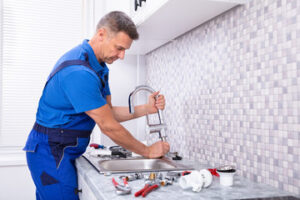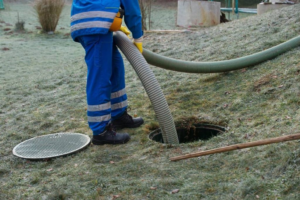Rosenberg Plumbing is one of the most fundamental building blocks of civilization. It delivers clean, fresh water and removes waste efficiently, safeguarding hygiene and sustaining healthy living conditions.

Pipe materials range from copper, renowned for its durability, to lightweight plastics that make it affordable and versatile. The pipes themselves are categorized into two main types: piping systems and plumbing systems.
When it comes to industrial piping systems, valves are critical components that ensure pipes function efficiently. They help control water flow, manage pressure, and prevent backflow. Valves also make it possible to shut off sections of the pipeline for maintenance and repair. Moreover, they can significantly reduce the risk of accidents and minimize damages and water loss if a pipe bursts. In order to choose the right kind of valve for a piping system, it is essential to know their different functions and characteristics.
There are a number of different kinds of valves available for industrial piping. Each type of valve has its own advantages and disadvantages. Some are designed for specific types of media, while others are suitable for general purpose use. The main factors that determine the appropriate type of valve include the temperature, pressure, and compatibility with the medium. Choosing the right valve for a piping system is crucial to optimizing costs and ensuring safe, accurate, and reliable operation.
One of the most common valves used for fluid flow is the ball valve. This valve is comprised of a hollow sphere with an opening that can either be in line or perpendicular to the pipeline. When the opening is in line with the pipe, it is open, and when it is perpendicular, it is shut. This valve is ideal for applications that require a quick shut-off and can handle high-pressure systems.
Other types of valves for industrial piping include gate valves and butterfly valves. Gate valves are typically operated by lifting or sliding a gate element housed within a valve body into or out of the fluid path. They are perfect for starting or stopping the flow of liquid, gas, and air in a pipe system.
Other than the basic functionalities of these valves, there are some other important factors that should be taken into consideration when selecting the proper valve for a particular application. Firstly, it is important to understand the codes and standards of the valves. This will help the piping engineer or designer decide on which type of valve to install for a particular system.
Plumbing and Piping
Plumbing is the system of pipes, fixtures and appliances that transports water to and from appliances like sinks, toilets and showers. It is also responsible for draining unwanted wastewater to the sewer system. A well-functioning plumbing system is essential to modern life, and a failure in this system can result in flooding, water damage, and expensive repairs.
Piping systems move chemicals, water and other fluids to support industrial processes. They are often highly complex, and they must be designed to withstand various stresses and loads. Piping engineers are responsible for designing and analyzing piping systems to ensure that they will meet their design objectives and comply with regulatory requirements.
Pipes are the core of a piping system, and they can be made from many different materials including metals, ceramics, plastics and concrete. They are normally a tubular section, but they can be in the form of a cylinder or oval section as well. Pipes are usually manufactured to specific dimensions and lengths and they can be either seamless or welded.
The main difference between plumbing and piping is that plumbing deals with common substances found in the home, while piping focuses on industrial chemicals, liquids and gases. This type of piping is much more complicated than building plumbing and requires more advanced knowledge of chemistry and pressure systems.
One of the most important considerations in piping design is to minimize stress and vibration in the system. This is achieved by implementing proper support and restraint systems. Engineers use supports, anchors and hangers to distribute load, avoid excessive deflections and reduce stress concentrations in critical areas. In addition, they may include expansion joints or flexible connections to accommodate thermal expansion and contraction.
Lastly, pipe stress engineers are responsible for evaluating the mechanical behavior of piping systems under normal operating conditions as well as special events such as seismic activity and extreme wind and relief-thrust loads. They will prepare a project stress design criteria or basis and conduct piping stress analysis using validated software tools. They will also provide engineering services like preparing P&IDs, pipe layouts, dimensional and constructability reviews, piping material selection and review of CAD drawings and 3D models.
Plumbing and Drain Cleaning
Drains are responsible for carrying wastewater away from homes and businesses, and keeping them clean is essential to maintaining a sanitary and hygienic living environment. But over time, debris, hair, soap scum, and grease can build up in drains and lead to clogs or blockages. Professional drain cleaning services can remove these substances and restore smooth drainage, preventing plumbing problems and extending the life of pipes.
Homeowners can take steps to prevent drain clogs and blockages, such as using a strainer to catch debris before it goes down the drain, avoiding flushing inappropriate items down the toilet, and removing sludge from the drain opening regularly with a plunger. However, when these measures fail, it may be time to call a plumber. Clogged drains can cause water backups, overflows, and other inconveniences that may require costly repairs or pose health risks. Proactive drain maintenance can reduce the risk of these issues and prevent clogs from occurring in the first place.
Common drain cleaning methods include mechanical drain snakes, chemical drain cleaners, and hydro-jetting. Some drain cleaning companies also offer eco-friendly enzyme-based drain cleaners that break down clogs over time without the use of harmful chemicals. These products can be used on all types of pipes, but are particularly effective for addressing clogs caused by grease, hair, and soap scum.
Another popular option is video inspection of drain pipes. This technology allows plumbers to see the clog in real-time, diagnose the problem, and pinpoint its location. It also helps them recommend the most effective solution for your specific pipe materials, age, and condition.
The difference between drain clearing and drain cleaning is that clearing is a process of dislodging an obstruction from a single section of pipe, while cleaning makes the entire pipe completely free of clogs and obstructions. Both are important components of a well-functioning plumbing system, but cleaning is the preferred method for ensuring longevity and effectiveness.
When deciding on a career path, it is important to weigh the pros and cons of different industries. While there are many benefits to working as a plumber, the stigma associated with this industry can be a deterrent for some. But by reframing the perception of plumbers, and specifically drain cleaners, individuals can discover this rewarding career opportunity.
Plumbing and Maintenance
Plumbing maintenance encompasses services that help ensure your home’s plumbing system is working correctly. This includes checking for leaks, clogs and other potential problems as well as conducting regular maintenance on plumbing fixtures and appliances to prolong their lifespans.
Performing regular maintenance on your plumbing system can help reduce your water bills by identifying and repairing inefficiencies. For example, leaking faucets or toilets can contribute to high water bills, and fixing these issues quickly can prevent significant damage from occurring and save you money in the long run.
Maintaining your plumbing system can also help protect your home’s value. A well-maintained plumbing system indicates to potential buyers that the property has been cared for, which can make it more appealing to potential buyers. Keeping on top of routine maintenance can also prevent major plumbing problems from occurring that could decrease the value of your home, such as burst pipes and extensive water damage.
Whether you’re a homeowner or landlord, maintaining your plumbing system is important to avoid costly repairs and maintain the value of your home or rental property. Leaks, clogs and other problems can cause severe damage to your property and potentially lead to mold growth and health concerns. Regular maintenance can help keep your plumbing in good shape, reduce water waste and save you money on energy costs.
The plumbing systems in our homes and rental properties are subject to a lot of stress and wear and tear, so it’s important to take steps to protect your plumbing. Whether you need help with a clogged drain, a water heater repair or a new fixture installation, a qualified plumber can assist you.

